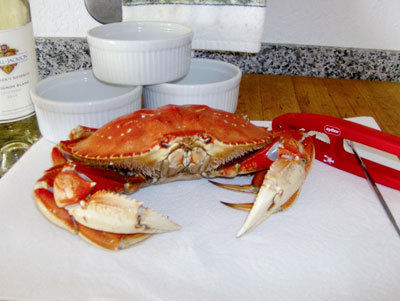Having spent my tender years being shuffled from one aunt’s house to another, I was often found clamming with them on the ocean shore in Westport, Wash., or shaking crab in our family’s cannery on its wharf.
My winter memories are of fog lying low along the ocean’s beaches and drifting across the roads. With 180-plus inches of rain each year, our clothing smelled of damp wool and of smoke from burning wood in our cook stoves and fireplaces.
I remember the clean, fresh smell of the evergreen trees after a light rain had fallen, much like stepping out under our grove of redwoods here in Ben Lomond.
But mostly I remember the smell of fish and how cold and wet that cannery was.
I would sit on an empty lobster trap by a fire burning in an old oil barrel, while the fishermen were unloading their boats. It seemed that everything on those boats was jumping, crawling or snapping.
Holiday weekends, my family would spend the mornings digging razorback clams, and when the limit was reached, we would go to the nearby state park for a clam and crab feed.
Unlike the Pismo clam, which is round and grayish, the razor clam is shaped like a dark green hotdog bun about six inches in length. My family loved them; I detested them.
The Dungeness crabs were my favorite. These crabs were named for the town of Dungeness in northern Washington state. My aunts would pick up a crab by its back and drop it into the waiting pot of boiling water on the huge barbecue pit. We would all gather around, warming ourselves over the coals as the clams were being fried and the crabs were cooking.
As soon as the crabs were cooked and cleaned and still warm, we would dip the pieces into hot melted butter. That continues to be my favorite way to eat Dungeness crab.
After the fire had died down and we were ready to go home, the aunts would divide the leftover crabs among themselves, to be prepared the following day as a crab thermidor.
Several years ago, I went home again. I stood on that same wharf, in front of that same cannery building, which was still standing, its windows now boarded over, and I shed tears for what had been and for what could no longer be.
Thomas Wolfe’s novel “You Can’t Go Home Again” has proven for me to be true, along with the writing of the ancient Greek philosopher Heraclitus, who wrote “You cannot step twice into the same river.”
From my home to yours, happy holidays.
– Colly Gruczelak, a Ben Lomond resident, loves people and loves to cook. Contact her at cz****@*****st.net.
CRAB THERMIDOR
Serves 4
2 cups crab meat at room temperature (about a 2-pound crab, cleaned and picked over).
Four 10-ounce ramekins
3 tablespoons unsalted butter
¼ cup diced shallots
¼ teaspoon garlic, minced
3 tablespoons flour
2 cups cream, heated
2 egg yolks, lightly beaten
½ teaspoon thyme
1 tablespoon Dijon mustard
1 teaspoon salt
½ teaspoon pepper
¼ cup dry sherry wine
1 cup gruyere cheese, grated
3 tablespoons parmesan cheese, grated
Preheat oven to 350 degrees.
In a 2-quart saucepan, sauté the butter, onions and garlic until soft.
Over medium heat, using a wire whisk, whisk in the flour and cook for 3 minutes.
Whisk in cream and cook until thickened.
Add 3 tablespoons of hot sauce to the egg yolks, stirring quickly.
Add the egg yolk mixture to the rest of the hot sauce, mixing well.
Add mustard, salt and pepper and wine. Cook on low for an additional 3 minutes.
Remove from heat and stir in half of the gruyere cheese.
Stir in crabmeat and fill ramekins.
Sprinkle the reserved parmesan and gruyere cheese on top and place on baking sheet.
Bake 15 minutes or until bubbling.
Raise sheet to 5 inches below broiler and broil until top is golden brown.
Serve with rice or spooned over a toasted English muffin.
— Colly Gruczelak













